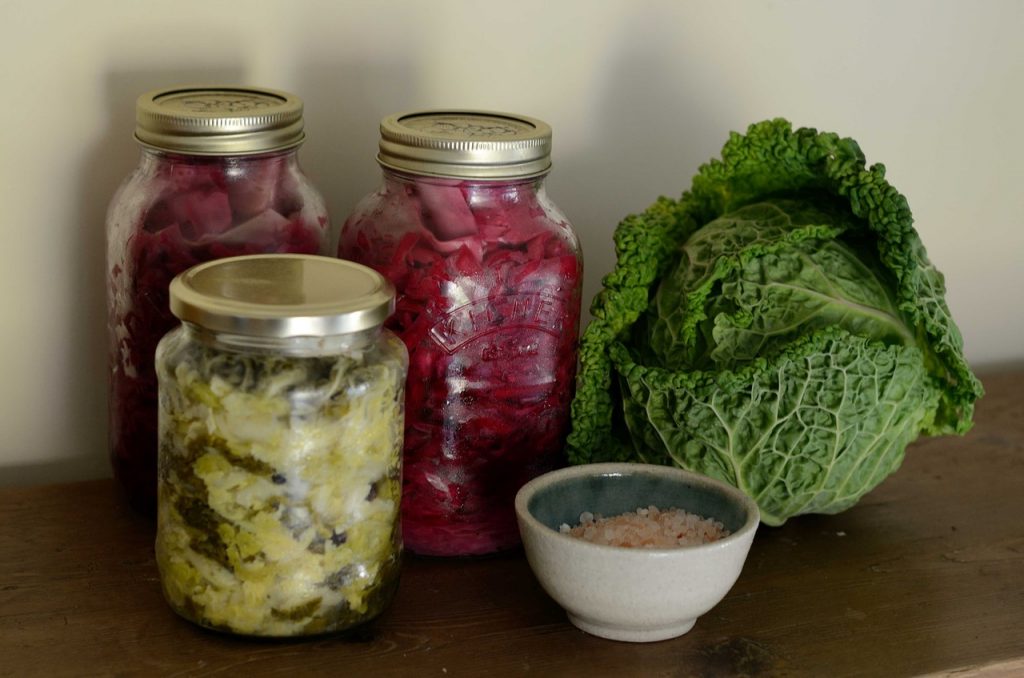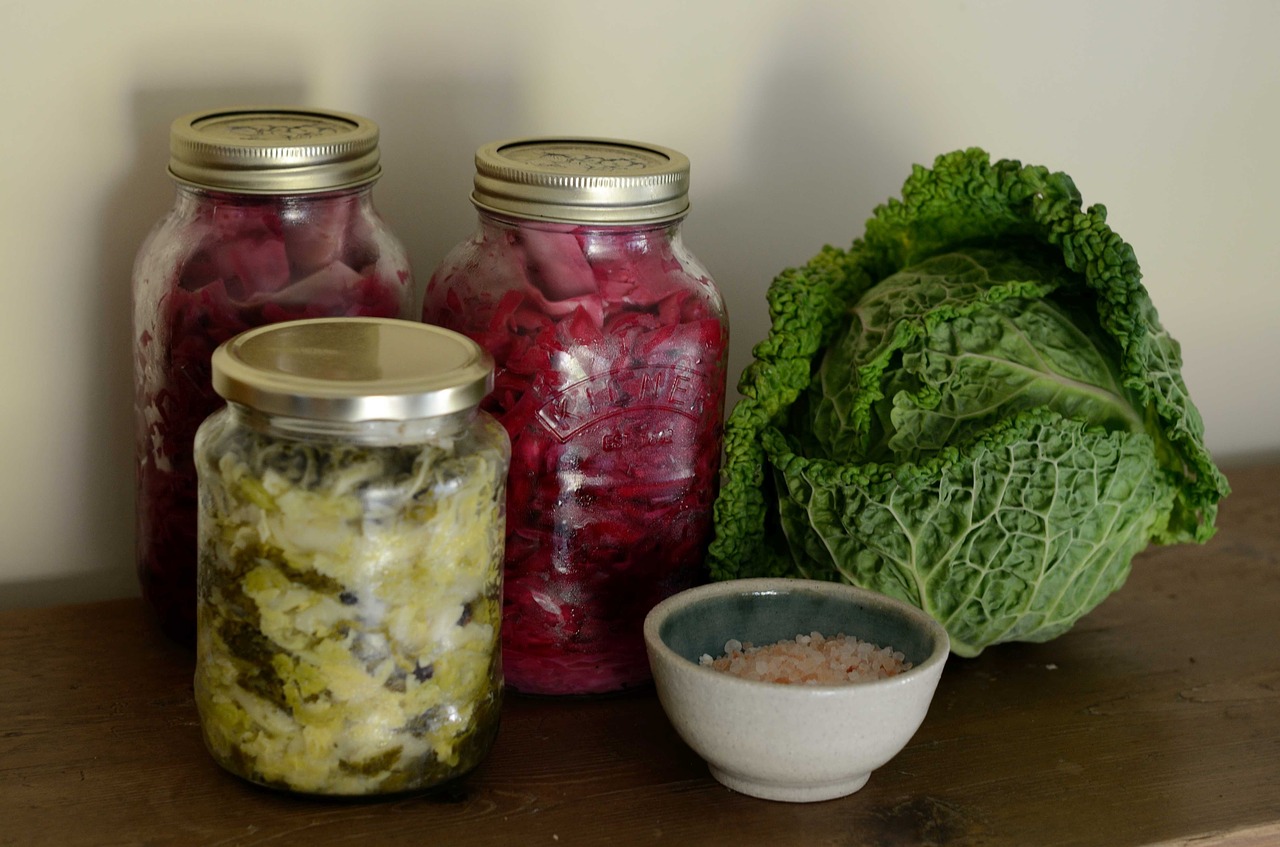Getting the Most out of Fermenting Foods

Sometime in the last 150 years we went from a culture that had a rich history of fermenting food and became a culture that is obsessed with clean, sterile environments. But don’t get me wrong. I am all for clean hands, clean bodies and clean homes, however, sterile is best left to contact lens solution, canning practices and operating rooms.
Back in the day when people did not have things like refrigeration, they did just fine. Before our pristine and clean focus, people were more at home with the natural world that contains natural things, like bacteria and yeast.
People are geared to be on the lookout for things that threaten them. We operate on a better safe than sorry setting that flags anything that ‘might’ be a potential threat. When we sense such a threat, we withdraw from it. This may keep us safe, but it also means we err in the direction of labeling something as a threat when it is nothing of the sort.
When people lived as they did in the pre-industrial era they were familiarized with many ways of keeping food safe and palatable that did not require modern conveniences like refrigeration. Almost every kitchen had some sort of fermentation process going on, be it something like sourdough or yogurt or fermented vegetables like sauerkraut. Not only were recipes handed down from parent to child, but living cultures were shared so that the family fermented foods could be made. Because these things were common and found within our own houses we did not see them as anything out of the ordinary.
Then came the modern conveniences that few of us would ever choose to live without. If our refrigerator goes out, we get that replaced immediately. We buy our food fresh from the store and make sure we get the one with the furthest expiration date. Not just satisfied with pasteurized milk, we now want ‘ultra-pasteurized’ with even longer expiration dates. We may even want our food irradiated so it doesn’t decay.
In this type of world we are very detached from a world where a bacteria colony would be lovingly tended and passed down to our children and grandchildren. Instead we want our kitchens to have zero bacteria and are grossed out at the thought of merely touching something like yeast or mold.
A Funny Thing Happened on the Way to a Sterile Environment
We may have been conditioning ourselves to want a sterile environment, but it turns out that is hardly what we need to have a optimal health.
A bacteria free world seem like progress, but to our bodies this is an act of deliberate extinction of the very biome that is in charge not only of our immune system, but of our mental health as well. The human intestinal bacteria colony we each house is a vast world that needs our support in order to be healthy and provide us with abundant health.
Due to many of the changes in our post-industrial world, the biological diversity of bacteria that live inside us has shrunk by about 70 different species of bacteria. Not only are we not exposed to as many of these beneficial bacteria as our ancestors, we also routinely do things that reduce our personal bacteria load even more through the use of things like antibiotics, the preparation for things like colonoscopy, and even practices like colonics or enemas.
We are just on the bare beginnings of understanding how our intestinal microbiome functions in regards to the total health of our body. What is abundantly clear is that we did not arise in a sterile world and we will not thrive in one either. We must learn and relearn how to strike a balance between what is clean enough and what is too clean.
Old Practices Made New Again
Probiotics are beneficial bacteria that we can consume in order to replenish and bolster our natural intestinal microbiome. The research still debates how much, what kinds, and who should be using probiotics, but there is enough clear evidence that shows that readopting some of our previous ways of eating can make a positive difference.
The old practices of making yogurt, fermenting foods and creating drinks from symbiotic colonies of bacteria and yeast (SCOBY) as found in Kombucha and Kefir, are today’s hot topic foods. The market is booming with new and different versions of these ancient foods. Places like Whole Foods, Sprouts and other health food stores have sections devoted to each of these items and the variety and selections keep growing.
What is also booming is the price point for these things. Trendy foods can be sold for high prices and that is definitely the case for things like kombucha, kefir and fermented foods. Although competition is fierce among the various brands it has not driven prices down very much. As with anything else, the higher the quality the higher the price. Recently I found one of my favorite kefir drinks had a price hike of over $2 per quart within just about six months time. A small jar of fermented carrots can carry a $7 price tag and kombucha drinks are $2 – 5 per bottle.
Making Your Own Fermented Food
What is very glaring is the fact that these trendy probiotics are being sold at tremendous markup. The starting ingredients are pennies on the dollar of what the finished product costs. What is even more egregious is that it is very, very, easy – ridiculously easy – to make these foods ourselves. Fermenting food is easy. We can make them easily and with minimal mess in our own homes for just pennies instead of dollars.
After all, these practices used to be a part of practically every kitchen. All we need to start this again is a few basic things like glass or ceramic containers; a few starting ingredients and starter cultures; a little bit of easy to acquire knowledge; and most of all encouragement to get past our initial distrust brought on by our current culture. It is okay to make these things. It is safe to make these things. Fermenting food is easy. Here is how:





